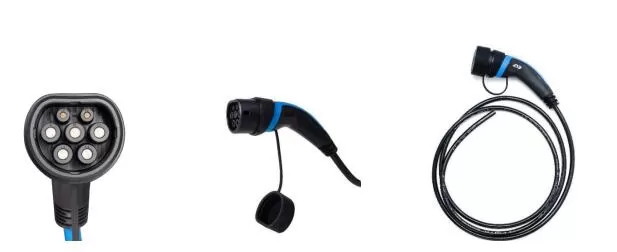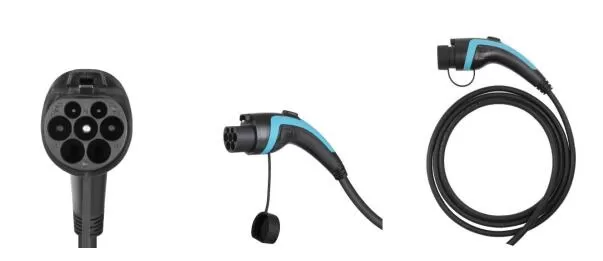As it usually happens with every new technology, the beginnings are tough and full of competing standards. Each manufacturer uses and develops his own standards and processes. Only time can determine which one will win. It was so with the charging connectors for mobile phones, today it is so with the connectors on charging cables for electric cars. So let's have a look at all the charging connectors that we have in the world now.
General overview of the different types of connectors
The charging speed depends on three components - the charging station, which is the source of power, the charging cable and the on-board charger. In this article, we will look at an important part of every charging cable - its connector.
For simplicity, the different EV connector types can be roughly divided according to the region where they are most used.Although this is a simplified statement. AC charging stations usually do not have an integrated charging cable, so the driver carries the cable that fits his car and the problem with the types of connectors is basically eliminated. DC fast charging stations always have a cable attached because of security reasons, the amount of current, cable's price and weight. so it is necessary to select a station that has the appropriate connector.
Connectors overview
In the following section, we offer a quick overview of the development and a description of the individual connectors.
AC connectors
The first electric cars, such as the General motors EV1, used an inductive connection for their charging where the current was transmitted by electromagnetic induction. However, this method of charging did not prevail because it was not efficient enough in that time. (Today, we can hear suggestions for returning back to inductive charging and Norway is by far the most progressive country in this regard.) The inefficiency created a demand for the design of a conductive connection with the elegant name of SAE J1772-2001. One of the requirements for the connector was establishing a connection with the deck and the infotainment system.

J1772 - Type 1
In California, a square plug named J1772 connector was introduced in 2001, but it was only capable of 6.6 kW, and so in 2008 Yazaki designed a new plug with a power of 19.2 kW, which since 2010 has become the standard for all American vehicles. Yazaki's design today is the new J1772, which is often called J-plug or Type 1.
Originally, electric cars in Europe also had this type of connector so many older or hybrid cars are still equipped with Type 1, but since it is common for al drivers of electric vehicles to carry around their own cable, there is no problem with charging at any AC station. However, now Type 1 is used mainly in America and Asia. The main disadvantage of this plug is that it allows the use of only one phase and it doesn't support a built-in automatic locking system.

Mennekes - Type 2
European cars used the Type 1 connector until major European automakers began looking for a new solution that could take advantage of all three phases. In 2003 new specifications IEC 62196 were established based on which the Type 2 "mennekes" plug was produced and it quickly became the new European standard. Thanks to the fact that both types of plugs (type 1 and 2) use the same J1772 signaling protocol for communication, car manufacturers can make vehicles in the same way and only at the very end they install the type of plug that corresponds to the market where the car will be sold. Passive adapters also exist among these types. Another important advantage of the Type 2 plug is that it supports a built-in automatic locking system.
(The Type 2 plug is called Mennekes, because it was a German company of the same name that developed a design for this plug. The term "Mennekes design" was often mentioned in the texts, and it started to be used among the general public.)
The Tesla Model S and Model X sold in Europe also have the EV Type 2 plug (only in a slightly modified version) which they can use for charging at any AC charging station and they also use this connector for the Tesla Supercharger network where they charge using DC.

GB / T standard
In China, under the supervision of the Guobiao Standardization Commission, a GB / T plug was developed, and currently it is the only one that is used. The fact that there are no other types of connectors in the whole country that would compete facilitates the development of the charging infrastructure. It should be noted that China is the country with the densest network of charging stations and has the largest share of electric cars in the world.
At first glance, the connector seems to be the same as Type 2, but the cables inside are arranged in reverse order so they are not compatible.
As one of the professional electric vehicle charging equipment manufacturers, AG Electrical can provide you with different electric vehicle chargers such as Type 1、Type 2 、GB/T、CCS2、CHADEMO and so on.
Also, we provide OEM/ODM service with the completely supply chain from concept design to MP(Mass Production).
As experienced team, we are capable of design and manufacture Industrial products with strict quality control system.
Do not hesitate to contact us if you need to.

OEM/ODM service